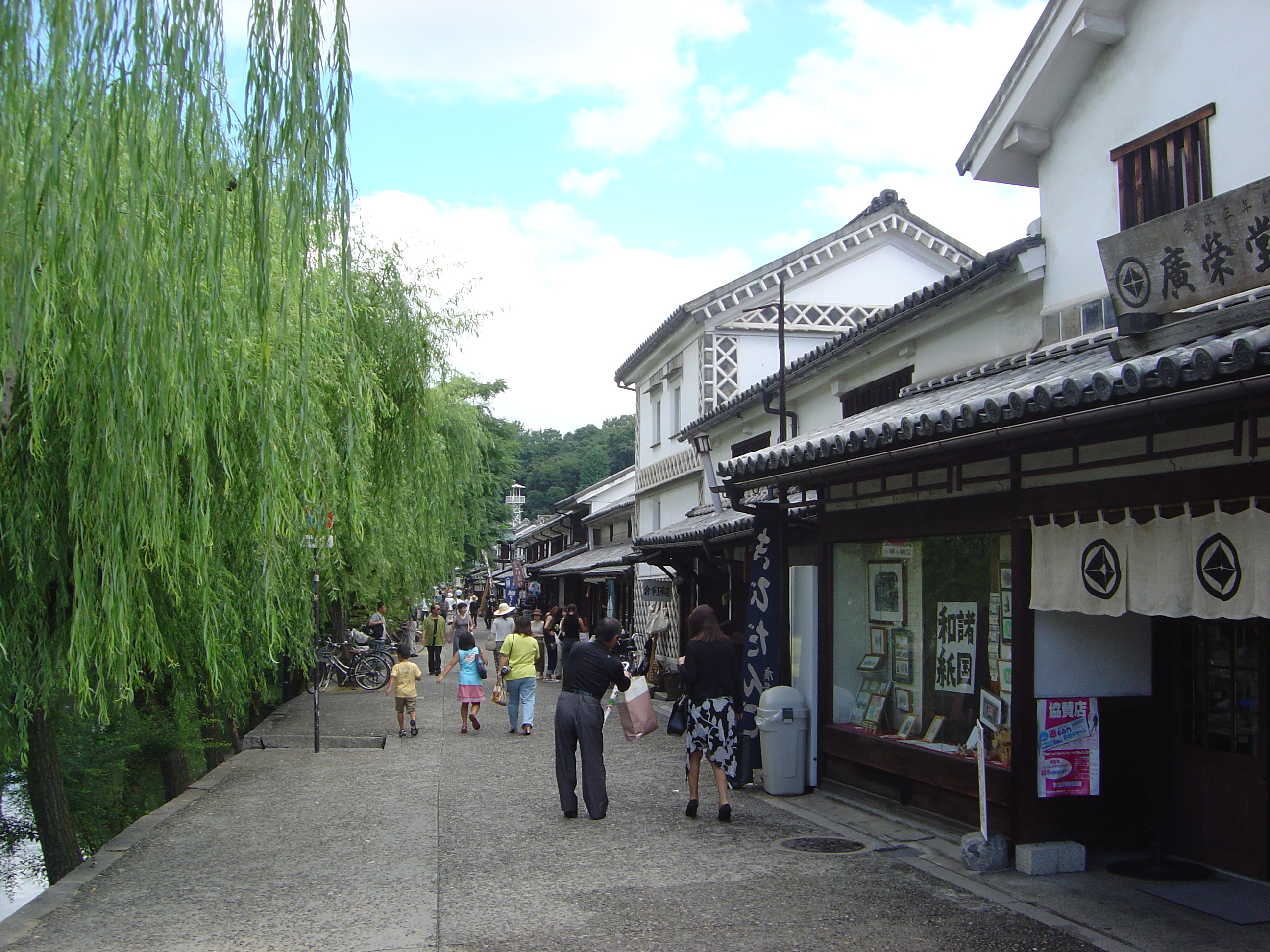|
Ibara Railway
The is Japanese railway line between Sōja Station, Sōja and Kannabe Station, Fukuyama. This is the only railway line operates. History Japanese National Railways started the construction of the line in 1966, but financial constraints halted work in 1980. The Ibara Railway Co. was established in 1986 and construction resumed under the newly founded third sector company, and the line opened on January 11, 1999, dual track and electrified as far as Kiyone. Basic data *Operators, distances: Sōja — Kannabe; 41.7 km / 25.9 mi. **Ibara Railway ( Category-1) ***Kiyone — Kannabe: 38.3 km / 23.8 mi. **Ibara Railway ( Category-2), West Japan Railway Company (Category-1), Japan Freight Railway Company (Category-2) ***Sōja — Kiyone: 3.4 km / 2.1 mi. (Shared with Hakubi Line.) *Gauge: 1,067 mm / 3 ft. 6 in. *Stations: 15 *Double-track line: Sōja — Kiyone *Electric supply: Sōja — Kiyone (1500 V DC) **All the Ibara Railway trains are DMUs. *Railway signal ... [...More Info...] [...Related Items...] OR: [Wikipedia] [Google] [Baidu] |
Okayama Prefecture
is a Prefectures of Japan, prefecture of Japan located in the Chūgoku region of Honshu. Okayama Prefecture has a population of 1,906,464 (1 February 2018) and has a geographic area of 7,114 Square kilometre, km2 (2,746 sq mi). Okayama Prefecture borders Tottori Prefecture to the north, Hyōgo Prefecture to the east, and Hiroshima Prefecture to the west. Okayama is the capital and largest city of Okayama Prefecture, with other major cities including Kurashiki, Tsuyama, and Sōja. Okayama Prefecture's south is located on the Seto Inland Sea coast across from Kagawa Prefecture on the island of Shikoku, which are connected by the Great Seto Bridge, while the north is characterized by the Chūgoku Mountains. History Prior to the Meiji Restoration of 1868, the area of present-day Okayama Prefecture was divided between Bitchū Province, Bitchū, Bizen Province, Bizen and Mimasaka Province, Mimasaka Provinces. Okayama Prefecture was formed and named in 1871 as part of the large-scal ... [...More Info...] [...Related Items...] OR: [Wikipedia] [Google] [Baidu] |
Diesel Multiple Unit
A diesel multiple unit or DMU is a multiple-unit train powered by on-board diesel engines. A DMU requires no separate locomotive, as the engines are incorporated into one or more of the carriages. Diesel-powered single-unit railcars are also generally classed as DMUs. Diesel-powered units may be further classified by their transmission type: diesel–mechanical DMMU, diesel–hydraulic DHMU, or diesel–electric DEMU. Design The diesel engine may be located above the frame in an engine bay or under the floor. Driving controls can be at both ends, on one end, or in a separate car. Types by transmission DMUs are usually classified by the method of transmitting motive power to their wheels. Diesel–mechanical In a diesel–mechanical multiple unit (DMMU), the rotating energy of the engine is transmitted via a gearbox and driveshaft directly to the wheels of the train, like a car. The transmissions can be shifted manually by the driver, as in the great majority of first-gen ... [...More Info...] [...Related Items...] OR: [Wikipedia] [Google] [Baidu] |
Oda District, Okayama
is a district located in Okayama Prefecture, Japan. As of 2003, the district has an estimated population of 21,285 and a population density of 130.33 persons per km2. The total area is 163.32 km2. Towns and villages *Yakage Merger *On March 1, 2005, the town of Bisei merged into the city of Ibara is a city located in Okayama Prefecture, Japan. The city was founded on March 30, 1953. , the city has an estimated population of 41,460 and a population density of 170 people per km². The total area is . Mergers On March 1, 2005, the town .... Districts in Okayama Prefecture {{Okayama-geo-stub ... [...More Info...] [...Related Items...] OR: [Wikipedia] [Google] [Baidu] |
Yakage, Okayama
is a town located in Oda District, Okayama Prefecture, Japan. As of june 1 2020, the town has an estimated population of 14,041 and a density of 147 persons per km². The total area is 90.62 km². The town is home to a former post station along the San'yōdō and contains a sub-''honjin'' from the Edo period. A samurai parade (大名行列) is held every November in commemoration of the town's history as a major stopping point on the ''daimyō''s trip to Edo during the era of ''sankin-kōtai''. Geography Neighbouring municipalities * Kurashiki * Asakuchi * Ibara * Kasaoka * Soja Transportation Railway * Ibara Railway: Ibara Line ** Mitani - Yakage - Oda Highway * Japan National Route 486 Notable people from Yakage *Okanoyama Yoshiro Okanoyama Yoshiro (born 3 November 1935 as Kiichiro Yamabe) is a former sumo wrestler from Yakage, Okayama, Japan. He made his professional debut in May 1955 and reached the top division in March 1962. His highest ra ... [...More Info...] [...Related Items...] OR: [Wikipedia] [Google] [Baidu] |
Kurashiki, Okayama
is a historic city located in western Okayama Prefecture, Japan, sitting on the Takahashi River, on the coast of the Inland Sea. As of March 31, 2017, the city has an estimated population of 483,576 and a population density of 1,400 persons per km². The total area is 355.63 km². History The modern city of Kurashiki was founded on April 1, 1928. Previously, it was the site of clashes between the Taira and Minamoto clans during the Heian period. It gradually developed as a river port. During the Edo period, it became an area directly controlled by the shogunate. Distinctive white-walled, black-tiled warehouses were built to store goods. During the Meiji Restoration (Japan's Industrial Revolution period), factories were built, including the Ohara Spinning Mill, which still stands as the nostalgic tourist attraction Ivy Square. On August 1, 2005, the town of Mabi (from Kibi District), and the town of Funao (from Asakuchi District) were merged with Kurashiki. Geography C ... [...More Info...] [...Related Items...] OR: [Wikipedia] [Google] [Baidu] |

